On View
From Joan Mitchell’s Early Works to Daniel Arsham’s Dystopian Future: 45 Can’t-Miss Gallery Shows in New York This September
Mark your calendars.
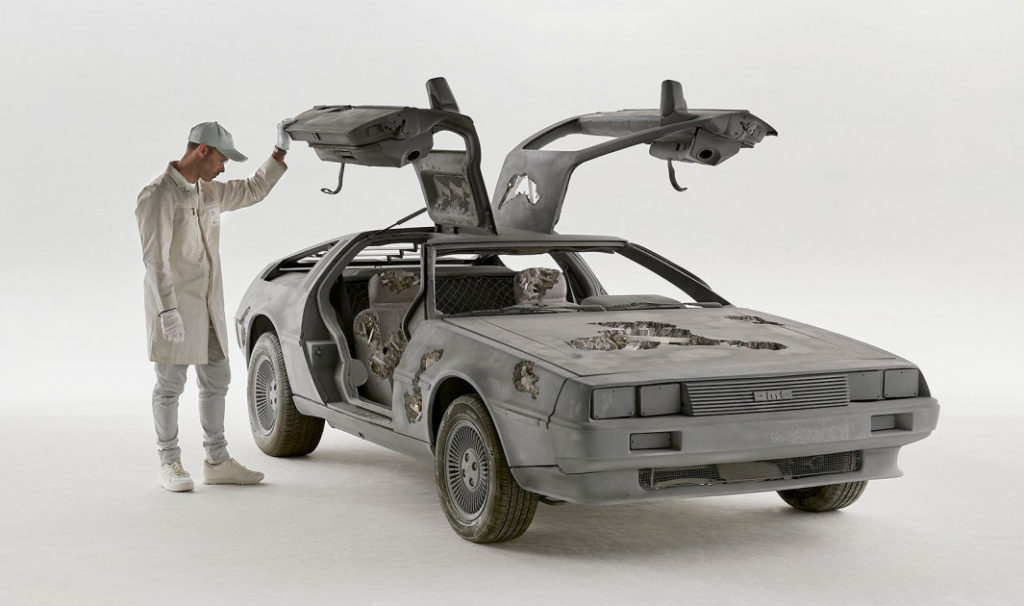
Mark your calendars.

Sarah Cascone &
Caroline Goldstein

The editors at artnet News searched New York City high and low for the most exciting, bizarre, and thought-provoking gallery exhibitions this fall. From Chelsea to the Lower East Side, we’ve got you covered.
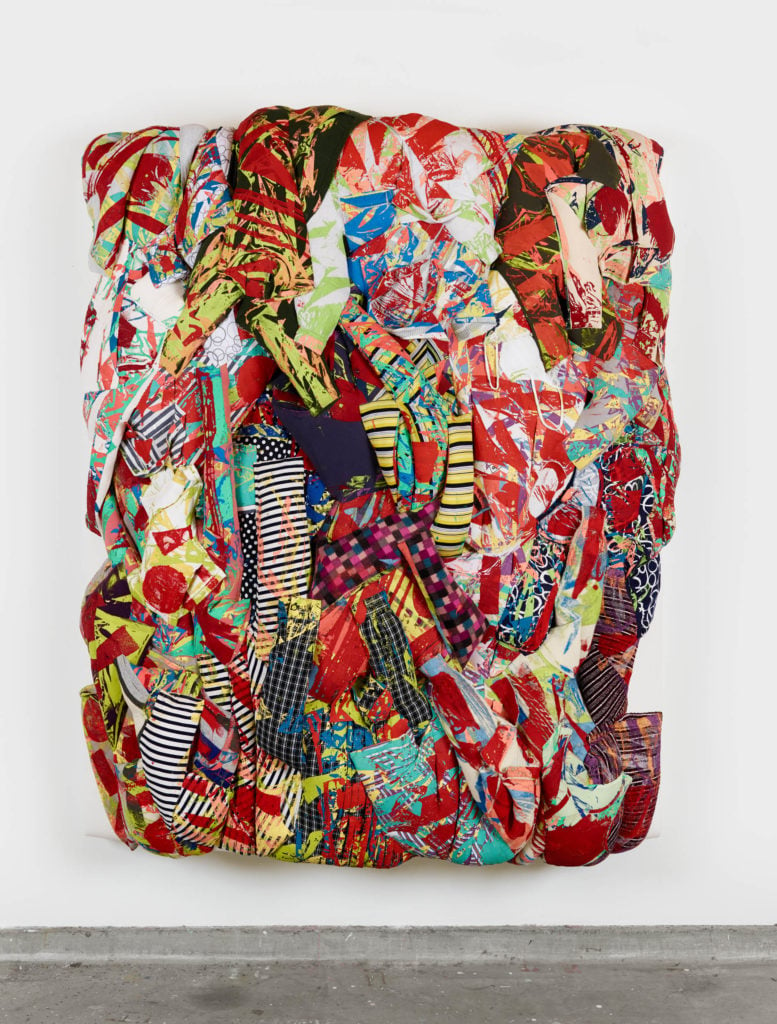
Aiko Hachisuka, Untitled (2017). Photo courtesy Van Doren Waxter, NY
Van Doren Waxter presents a two-person show featuring Los Angeles-based artist couple Aiko Hachisuka and John Williams. Hachisuka, born in Japan, creates large-scale wall works that combine silkscreened fabric, bundled together in rectangular assemblages; looking close, you can see the individual garments of clothing in the wall works, sleeves and cuffs intertwined. Juxtaposed in the gallery are Williams’s saturated paintings, which use similarly bright colors and frenetic lines on a two-dimensional plane.
195 Chrystie Street; August 29–September 29, 2018, opening reception September 5, 6 p.m.–8 p.m.
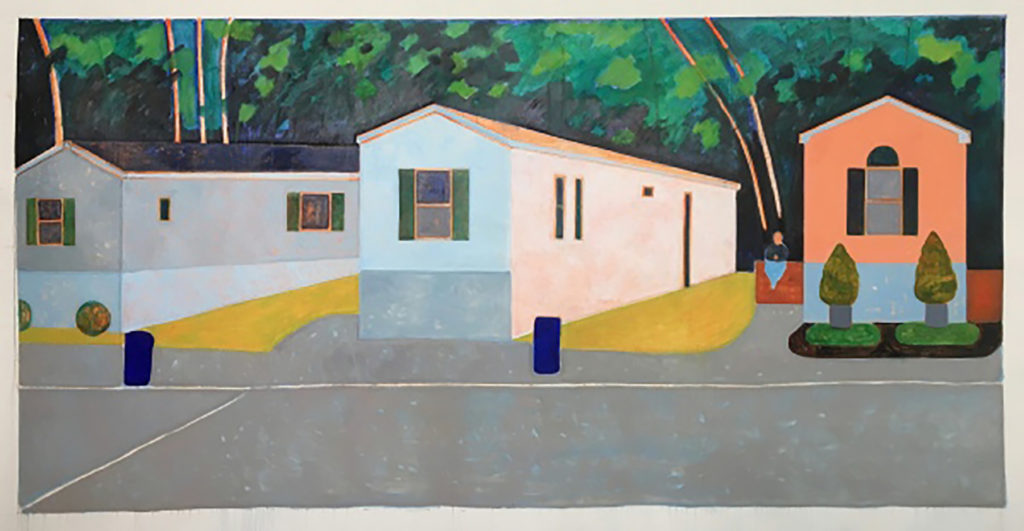
Adrianne Lobel, Orange House (2018). Courtesy of the artist and Bowery Gallery.
Adrianne Lobel’s new series of paintings are based on plein air studies she made of mobile home parks. The artist takes a traditionally bleak subject matter, mobile homes, and renders them in bright colors reminiscent of Richard Diebenkorn’s California landscapes. Lobel’s work has been called “somewhere between realist melancholy and utopian abstraction.”
530 West 25 Street; September 4–29, 2018, opening reception September 6, 5 p.m.–8 p.m.
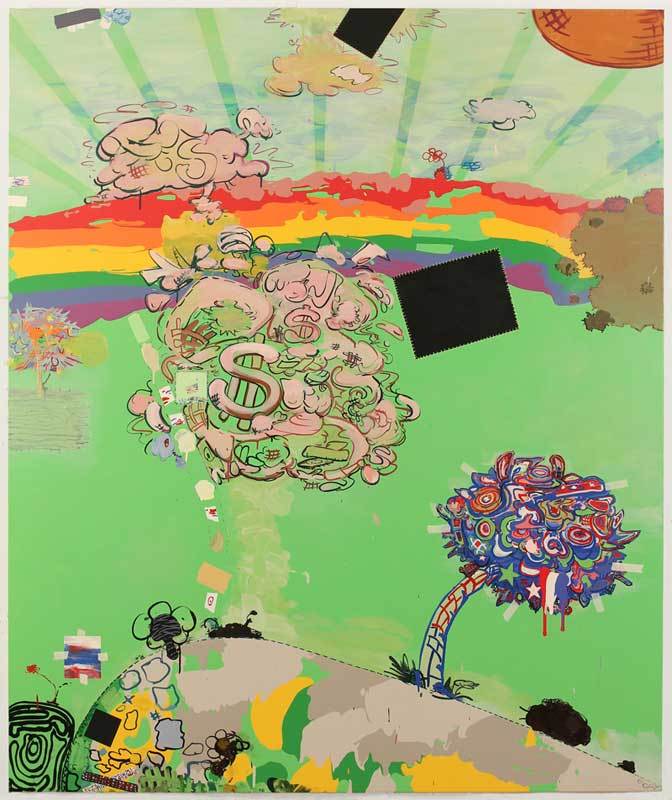
Jane Fine, Zuckerman Memorial Garden (2018). Courtesy of Pierogi.
In new paintings, Jane Fine draws on the visual language of the ’60s and ’70s psychedelia of her girlhood, contrasting cheerful colors and rainbow imagery with more sinister symbols, added after the election of Donald Trump, in order to represent what she sees as the failure of the American dream she knew growing up. Fine, who is Jewish, has also begun using the swastika in her work as a way of mocking the Nazis’ symbol of hate.
155 Suffolk Street; September 5–October 7, 2018, opening reception 5 p.m.–8 p.m.

Amy Hill, Young Woman with Cat. Courtesy of Front Room Gallery.
Amy Hill’s paintings channel 19th-century American folk art and Renaissance portraiture. She’s dressed her latest subjects in the fashions of the 1960s, in nostalgia for the era’s countercultural ethos, characterized by anti-consumerism, environmentalism, and the desire to “make love, not war.”
48 Hester Street; September 5–October 21, 2018, opening reception 7 p.m.
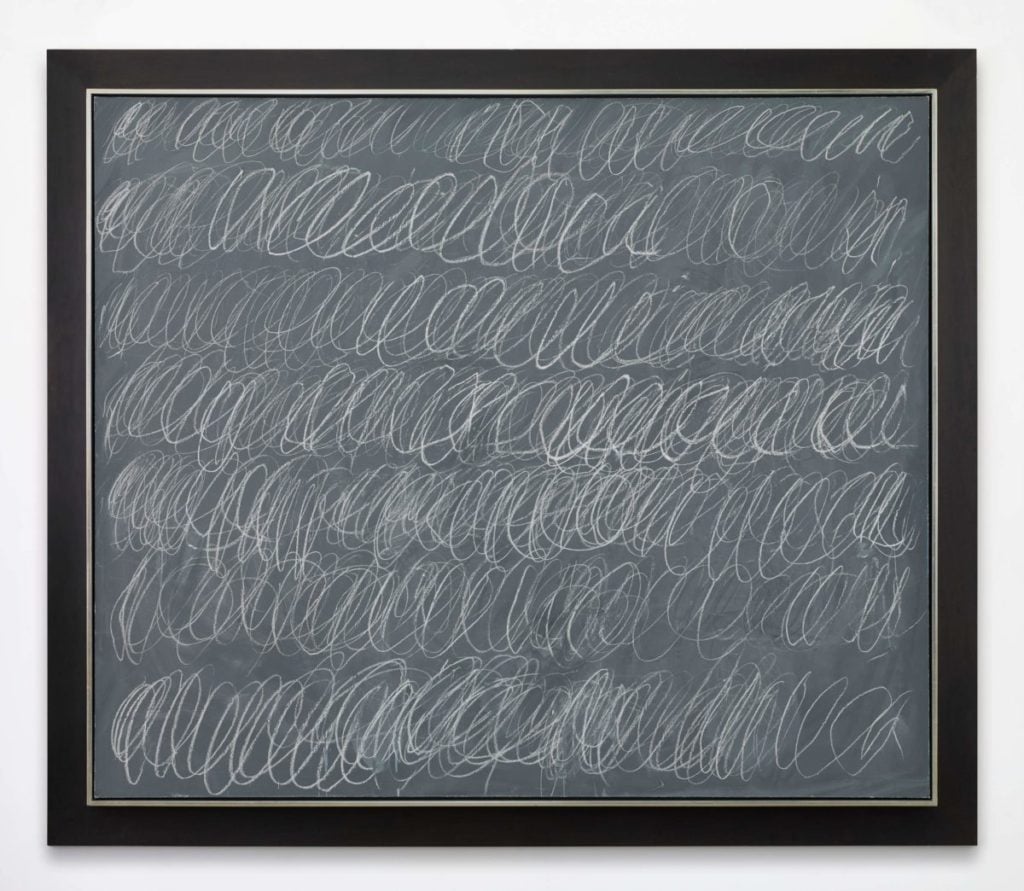
Cy Twombly, Untitled (1967). Photo by Stephen White, ©2018 Cy Twombly Foundation.
For his first time curating an exhibition at the gallery he co-founded, Brett Gorvy has brought together nearly 100 artworks by 27 artists, including Jasper Johns, Agnes Martin, Eva Hesse, Hannah Wilke, René Magritte, Joseph Cornell, and Lucas Samaras. The selection is inspired by a line from William Blake’s poem “Auguries of Innocence”: “To see a World in a Grain of Sand/And a Heaven in a Wild Flower/Hold Infinity in the palm of your hand/And Eternity in an hour.”
909 Madison Avenue; September 6–October 24, 2018
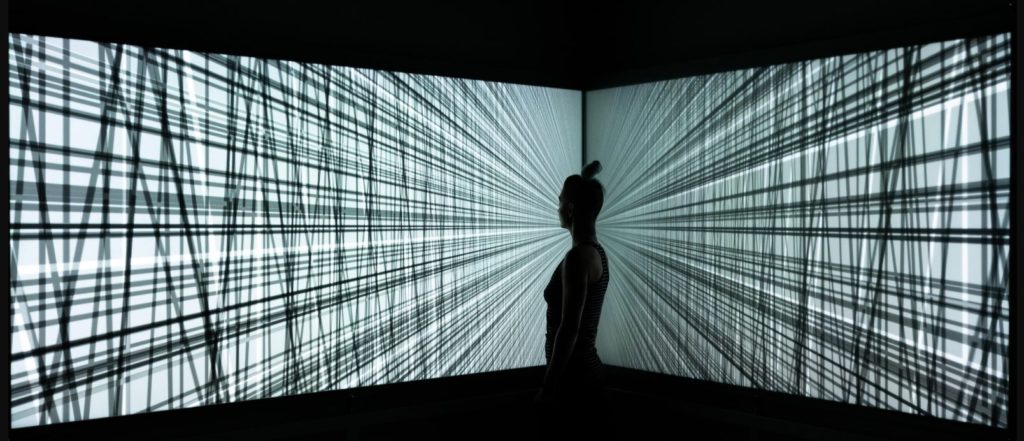
Rafael Lozano-Hemmer, Vanishing Points (2017). Image courtesy bitforms gallery. Photo: Antimodular Research.
At bitforms gallery on the Lower East Side, Rafael Lozano-Hemmer’s new media works give a glimpse of where the future of art might be headed. Using artificial intelligence technology, one work alights on the brightest piece of clothing visitors are wearing and classifies them in real time on a projected screen; in Vanishing Points, each person is tracked by software that creates unique perspective grids. Also on view is the “world’s first 3-D-printed speech bubble” that creates an aluminum cast based on the exhaled breath of a participant.
131 Allen Street; September 5–October 20, 2018, opening reception 6 p.m.–8 p.m.
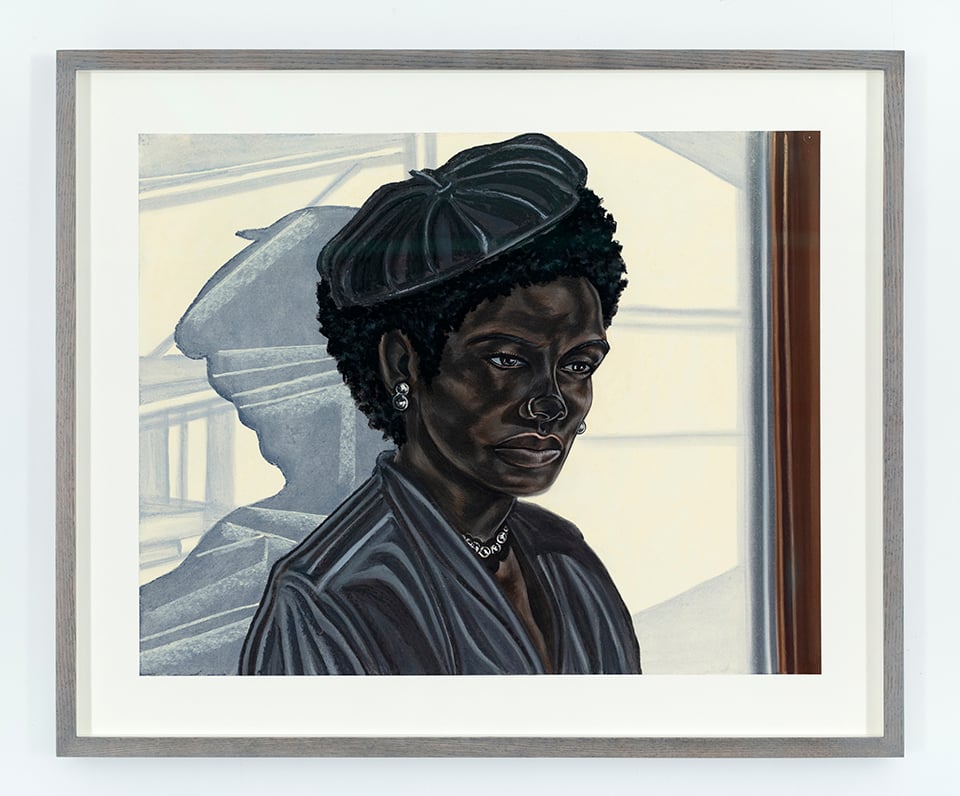
Toyin Ojih Odutola. Photo courtesy of Jack Shainman Gallery.
Toyin Ojih Odutola brings her fictionalized portrait series of two aristocratic Nigerian families, previously the subject of a solo show at New York’s Whitney Museum of American Art, to Jack Shainman Gallery. “Each exhibition has been a new and instructive experience for their lordships: to see how much interest developed for their heritage, but also for members of Nigerian nobility and for Africa as a whole,” notes the exhibition press release, which claims that family patriarchs Lord Emeka and Lord Omodele have enlisted their oldest children to organize this new show, which includes work even unseen by their fathers.
513 West 20th Street and 524 West 24th Street; September 6–October 27, 2018, opening reception 6 p.m.–8 p.m.
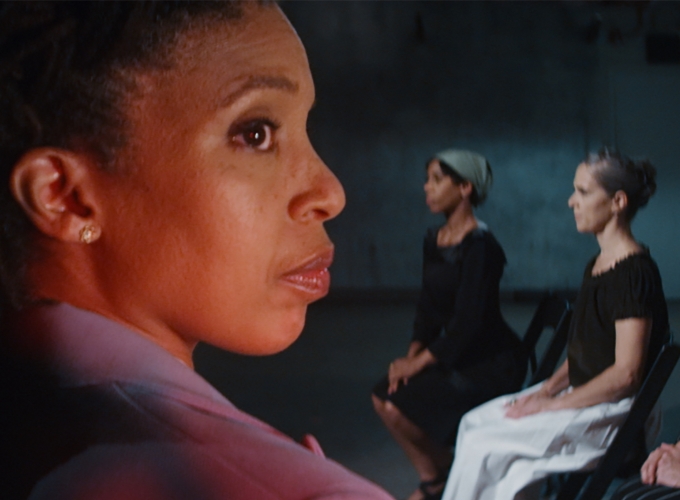
Catherine Sullivan, The Startled Faction (a sensitivity training) 2018, video still. Courtesy of Metro Pictures.
Catherine Sullivan’s latest film concerns ambiguous labor, not included in one’s job description and unpaid, and how to resist doing it, preserving personal boundaries. Her influences, according to the exhibition description, include “left-wing dance from the 1930s, social justice curricula, private testimony and academic sociology.”
519 West 24th Street; September 6–October 20, 2018, opening reception 6 p.m.–8 p.m.
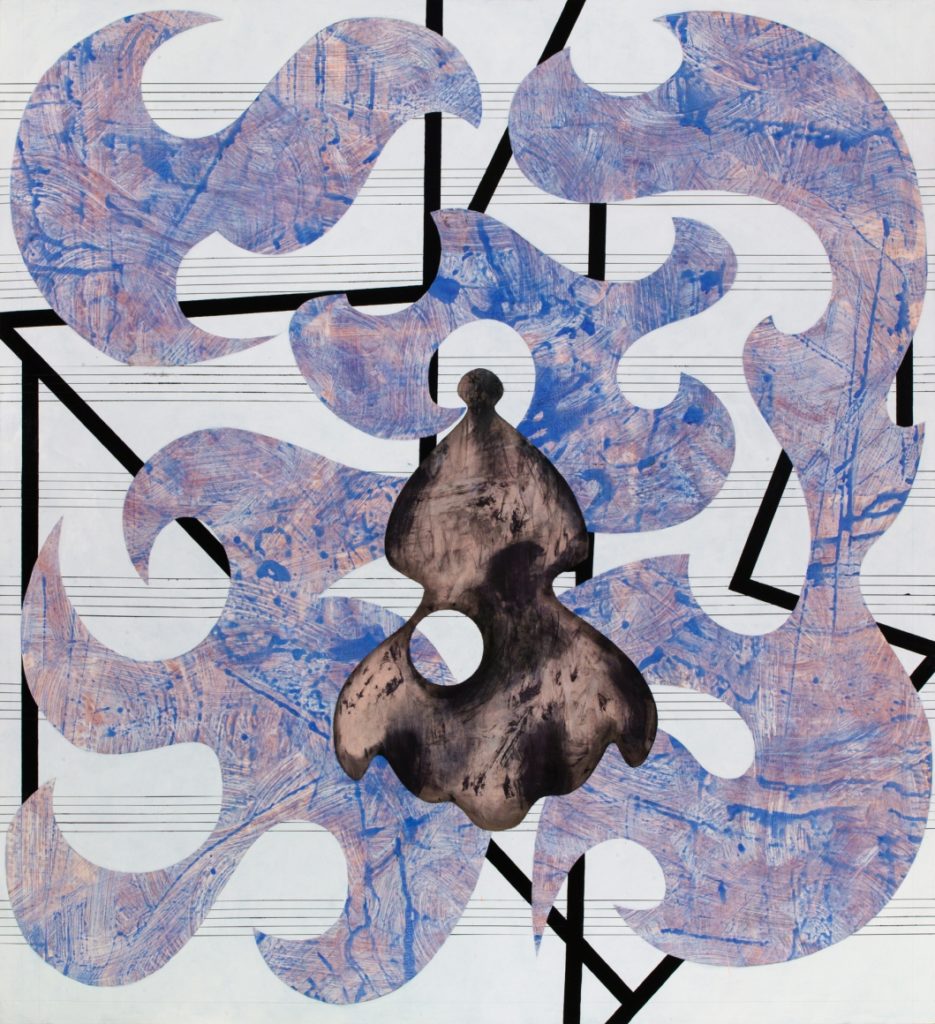
Charline von Heyl, Lady Moth (2017). Courtesy of Petzel.
Charline von Heyl’s dense, layered paintings feature complex compositions. Sometimes, color bleeds through from the reverse side of the canvas, creating mysterious ghostly images that draw in the viewer. This, her ninth solo show at the gallery, is timed to her survey exhibition “Snake Eyes” at the Deichtorhallen, Hamburg, on view through September 23.
456 West 18th Street; September 6–October 20, 2018, opening reception 6 p.m.–8 p.m.
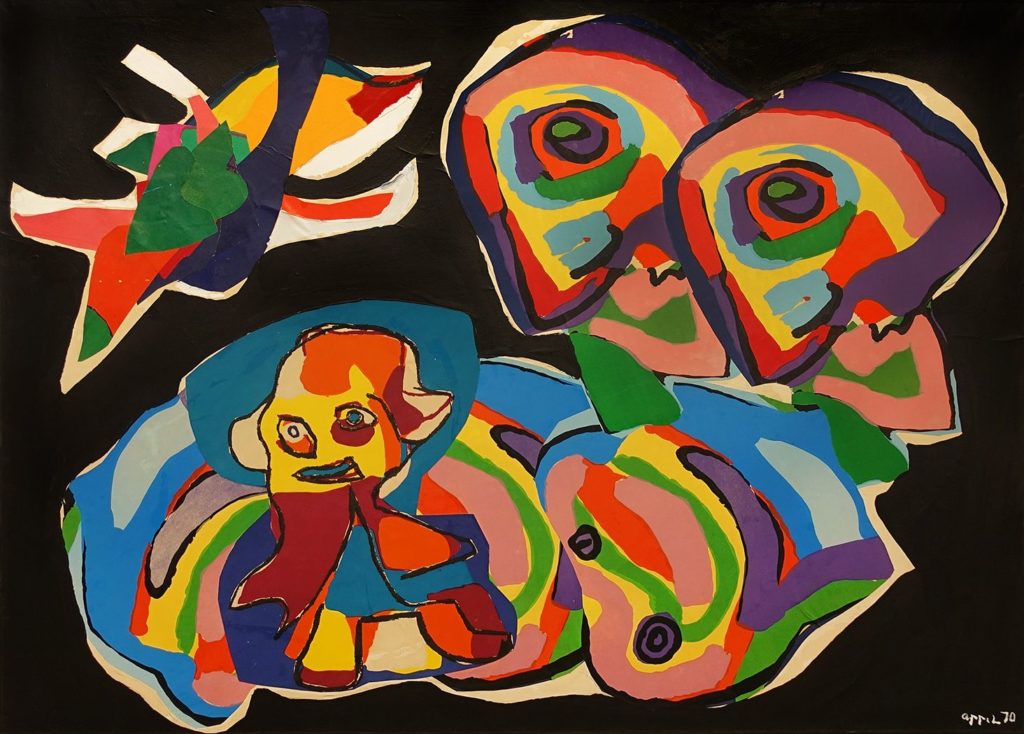
Karel Appel, Personnages et Oiseaux II (1970). Courtesy of Hollis Taggart.
Hollis Taggart opens its new Chelsea space with a selection of recently acquired works by artists including Alexander Calder, Hans Hofmann, and Theodoros Stamos.
521 West 26th Street; September 6–29, 2018, opening reception 6 p.m.–8 p.m.
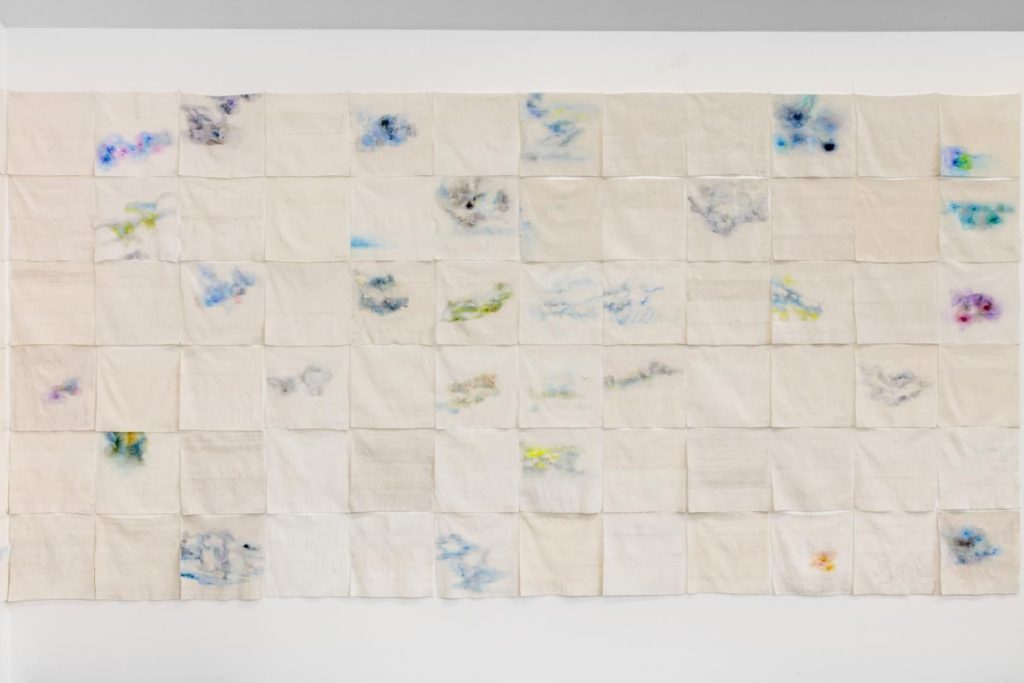
Liza Lou, The Clouds (2015–18), detail. Photo courtesy of Lehmann Maupin.
Liza Lou hasn’t had a New York solo show in over a decade, but she’s inaugurating Lehmann Maupin’s new Chelsea flagship with her monumental fabric and beadwork painting The Clouds, which appeared at the Sydney Biennale. The work’s 600 pieces were hand sewn in a gridded pattern with assistance from her studio of women in Durban, South Africa. Lou then paints over the beads, before breaking some of the beads to reveal the stencil-like surface below. She’ll also take over the gallery’s 536 West 22nd Street space with paintings and sculptures from her “Terra” series.
501 West 24th Street and 536 West 22nd Street; September 6–October 27, 2018, opening reception 6 p.m.–8 p.m.
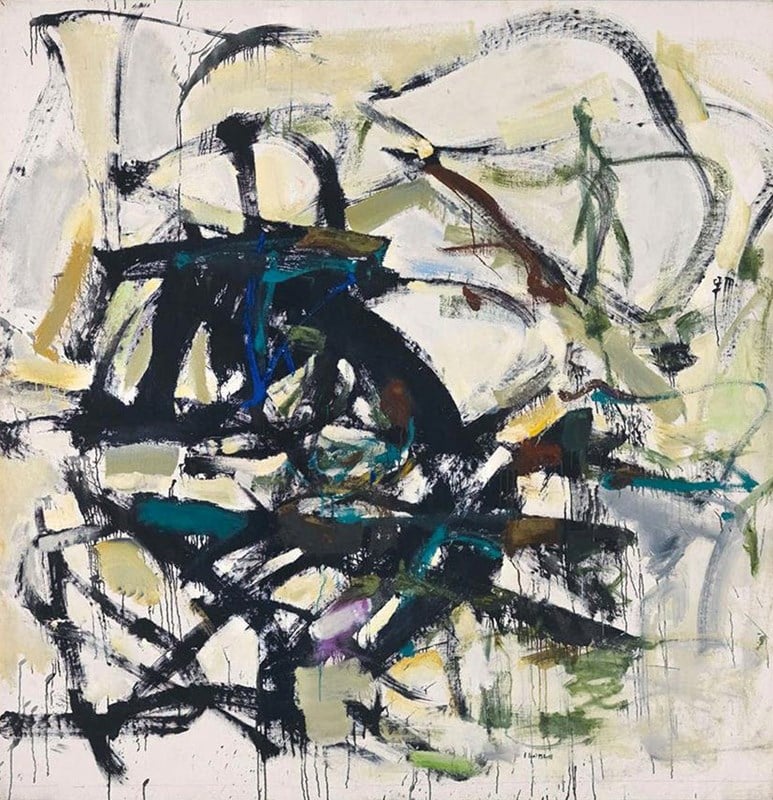
Joan Mitchell, Slate (1959). Courtesy of the JPMorgan Chase Art Collection, ©Estate of Joan Mitchell.
In May, David Zwirner announced that it would exclusively represent the estate of Abstract Expressionist Joan Mitchell, but she’ll have one last hurrah at Cheim & Read, which has hosted eight other solo exhibitions of her work over the last 20 years. The upcoming show will focus on Mitchell’s early career, dating from her first solo show in 1953, considered an extraordinarily strong beginning for the then-28-year-old painter.
547 West 25th Street; September 6–October 27, 2018, opening reception 6 p.m.–8 p.m.
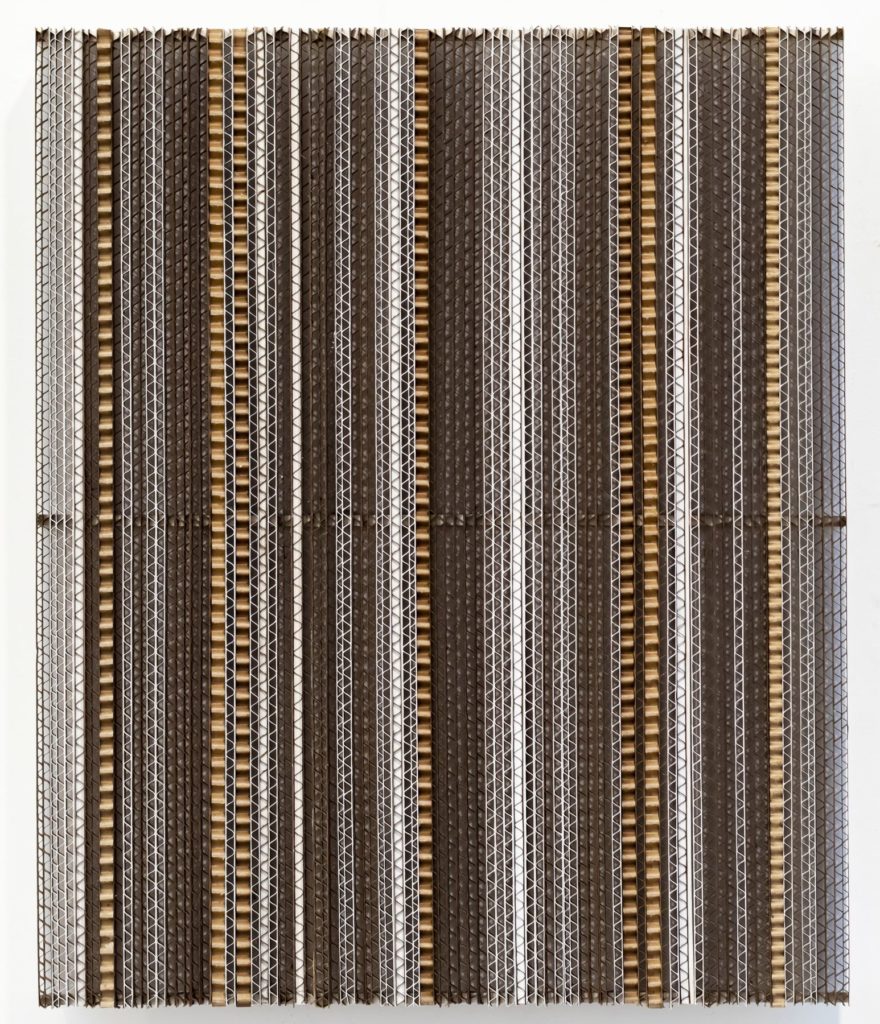
Tamiko Kawata, City One (2018). Courtesy of the artist and Garvey Simon Gallery.
The safety pin, that staple of punk fashion, is unrecognizable in the hands of Tamiko Kawata, who weaves these utilitarian objects with cardboard and paperclips to create hanging tapestry-like works. Born in Japan in 1936, Kawata moved to New York in the 1960s, where she unwittingly fell into using this unusual art material because of the difficulty in finding American clothing small enough to fit her without alterations.
547 West 27th Street, 2nd floor; September 6–October 6, 2018, opening reception 6 p.m.–8 p.m.
Barbara Takenaga’s new paintings are explosions of shape and color—in the catalogue essay accompanying the new series, critic Lilly Wei describes the niggling shapes as conjuring “underwater anemones…or love-maddened, furiously swimming spermatozoa.” The tadpole-esque forms do indeed look like niggling creatures, exploding out from a swirling eddy. Although there appears to be some sort of pattern, the artist actually employs spontaneity and accident as an integral part of her process.
535 West 22nd Street; September 6–October 6, 2018, opening reception 6 p.m.–8 p.m.

Frank Bowling, Elder Sun Benjamin (2018). Courtesy of the artist and Alexander Gray.
The first exhibition of British artist Frank Bowling since joining the roster at Alexander Gray Associates in January 2018. Bowling says his intention is “making the paint dance…the paint does its own thing, spreads and bleeds and then suggests images.” He insists that his canvases are abstractions rather than illustrations of complicated geopolitical ideas. Bowling will be the subject of a retrospective at Tate Britain in 2019.
510 West 26th Street; September 6–October 13, 2018, opening reception 6 p.m.–8 p.m.
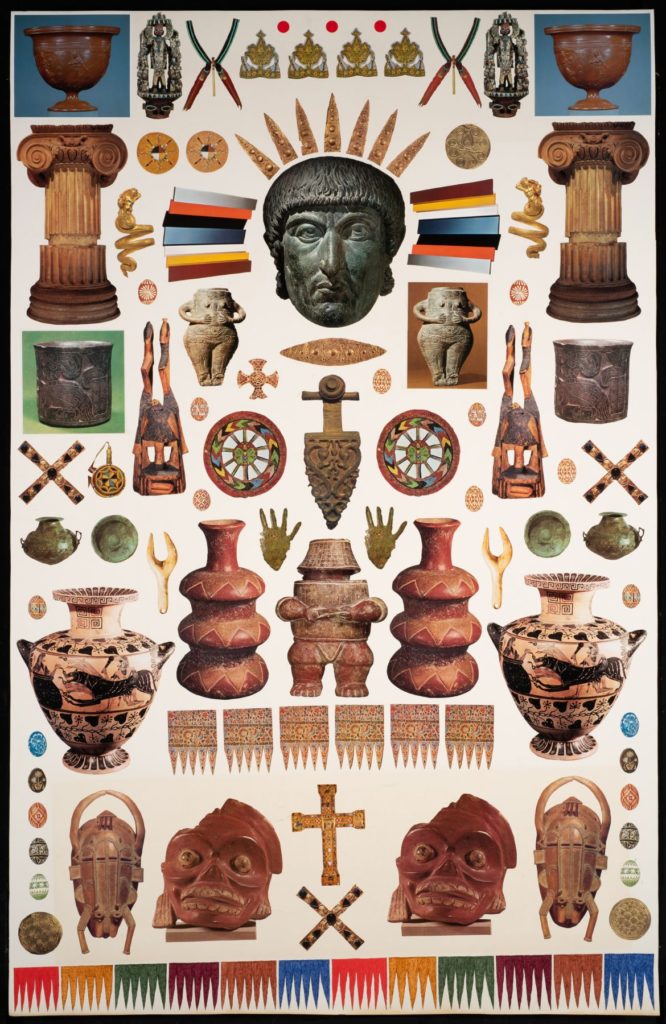
Matthew Craven, authority (2018). Courtesy of the artist and Asya Geisberg Gallery.
Matthew Craven’s new series focuses on the trappings of the powerful; the titles of the works point to a certain aspect of how that power is manifested visually. The works all share a color story, and Craven’s use of found imagery from encyclopedias and movie posters add to the cut-and-paste aesthetic.
537b West 23 Street; September 6–October 20, 2018, opening reception 6 p.m.–8 p.m.

Red Grooms, Smoking Man (1975). Courtesy of the artist and Marlborough Contemporary.
One of the lesser-known participants in the Happenings movement in the 1950s, the artist Red Grooms became a fixture in art scenes across the country, soaking up the local aesthetics in each city he visited. Grooms dabbled in installations, paintings, and sculptures, which will be on display at Marlborough.
545 West 25 Street; September 6–October 27, 2018, opening reception 6 p.m.–8 p.m.
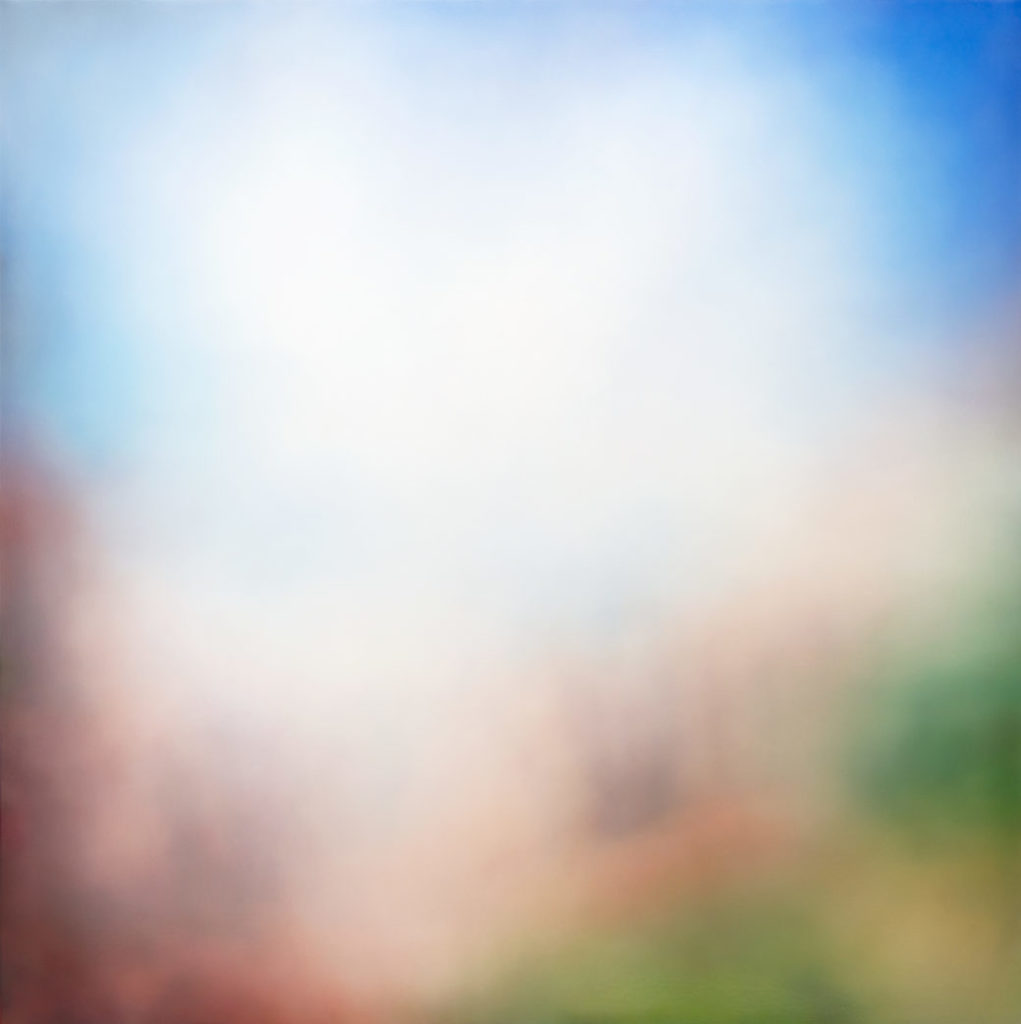
Tracy Rocca, Bryce (2018). Courtesy of the artist and Winston Wächter Fine Art.
In “Public Lands,” artist Tracy Rocca has taken images of National Parks around the country and distilled them into hazy paintings, where the color coalesces around the edges of the canvas. The images are meant to be evocative of the place, and have the appearance of a photograph that’s been over-exposed and shot through with light.
530 West 25th Street; September 6–October 20, 2018, opening reception 6 p.m.–8 p.m.
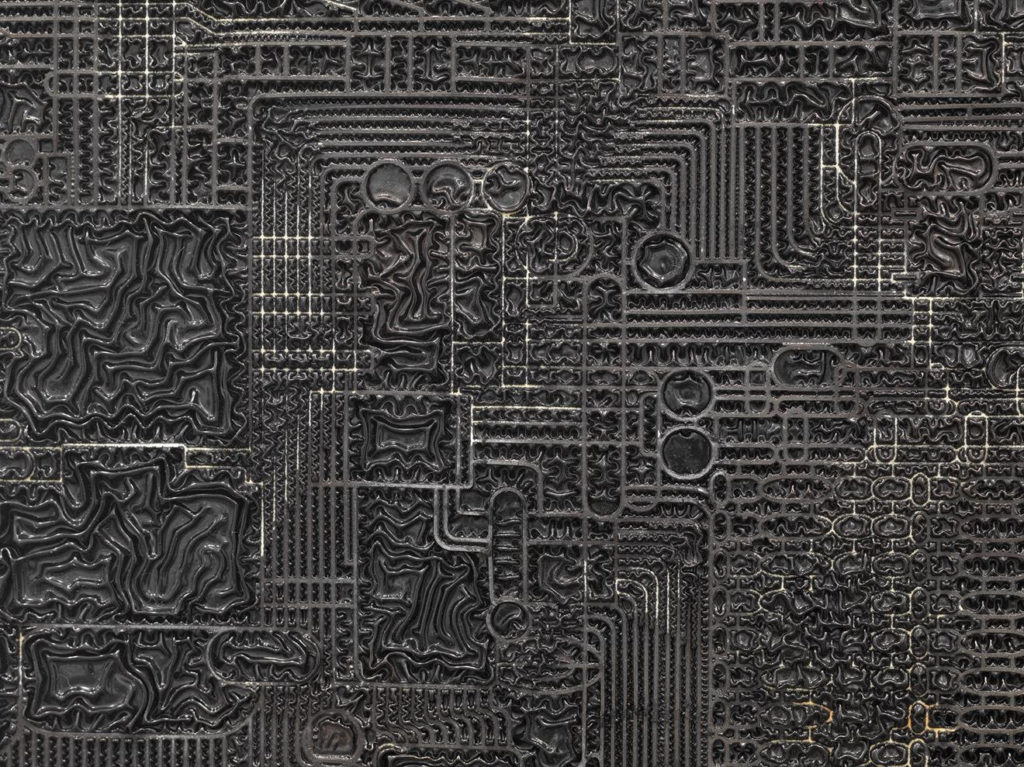
Analia Saban, Pleated Ink (Computer Chip, TMS 1000, Texas Instrument, 1974), 2018, detail. Photo courtesy of Tanya Bonakdar Gallery.
Analia Saban’s “Punched Card” denotes the analog and digital methods used to store data—an apt metaphor for the artist’s combination of new media technology and rudimentary art-making techniques. This duality is highlighted in the “Tapestry” bodies of work, where skeins of woven fabric are draped from the gallery ceiling, objects traditionally considered as craft; simultaneously, the grid-like pattern that emerges recalls the matrix of binary code.
521 West 21st Street; September 6–October 20, 2018, opening reception 6 p.m.–8 p.m.
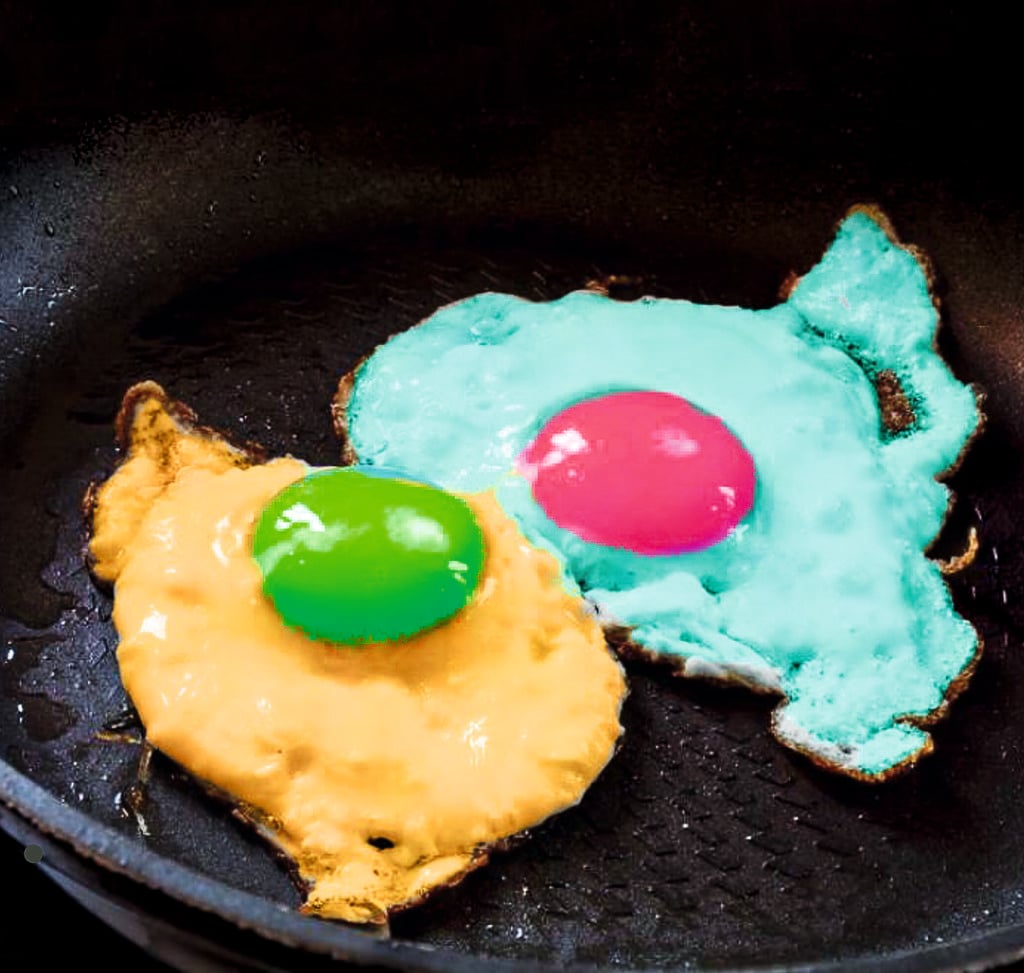
©Urs Fischer. Courtesy Gagosian
Urs Fischer will debut PLAY, a mysterious interactive installation featuring choreography by Madeline Hollander that has been described only as “an autonomous collective of chairs engaging with humans and our expectations.”
522 West 21st Street; September 6–October 20, 2018, opening reception 6 p.m.–8 p.m.
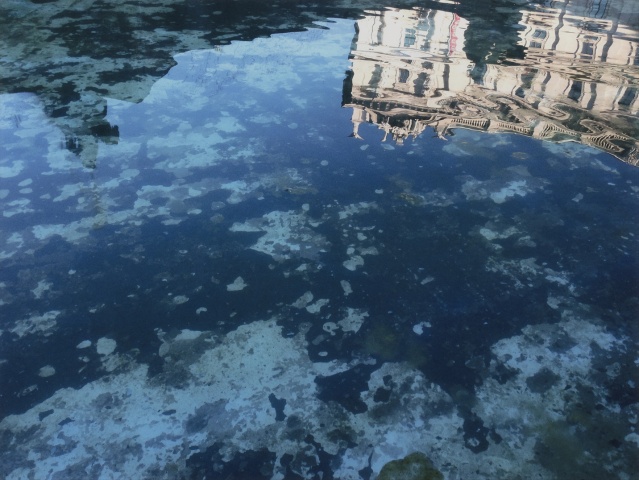
Emily Jacir, la mia mappa (2016). Photo courtesy of Alexander and Bonin.
Emily Jacir has titled her exhibition after a photo she took of Rome, which she considers her spiritual home, reflected in water. For her project La mia roma (omaggio ai sampietrini), the artist documented the city’s paving stones, called selciatori. Hand cut from volcanic rock and easy to remove, the pavers are sometimes thrown during political protests. While walking through the city, Jacir collected selciatori and documented them in her studio before putting each one back in place.
47 Walker Street; September 7–October 27, 2018, opening reception 6 p.m.–8 p.m.

Larissa Bates, New Pro V Latin Formula, For Latin X So Healthy It Shines (2018). Courtesy of Monya Rowe Gallery.
With colorful gouache paintings gilded with 22-karat gold and mother of pearl, referencing historical colonial trade in such precious materials, Larissa Bates considers her own identity as half Costa Rican, a culture she struggles to connect with having been raised by an American father after her mother died when she was a baby.
224 West 30th Street, No. 1005; September 7–October 13, 2018, opening reception 6 p.m.–8 p.m.
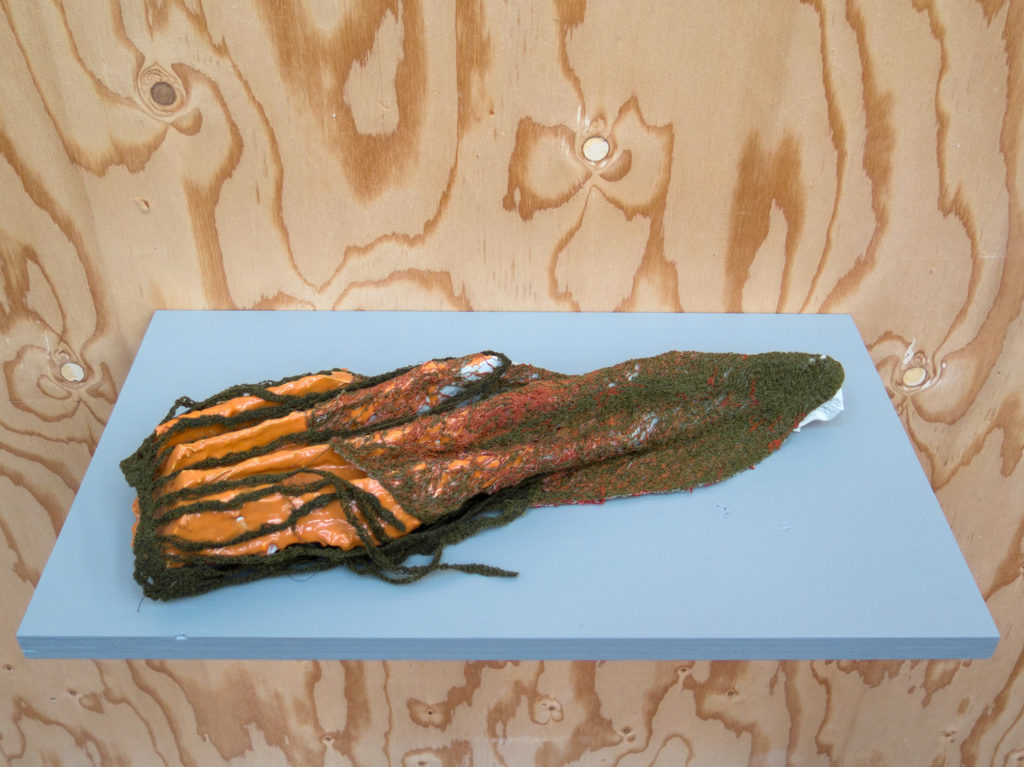
Maartje Korstanje, Untitled (2018). Courtesy of the artist and Marc Straus Gallery.
A group show whose name is inspired by Louise Bourgeoise’s 1993 piece, all of the works are created using some sort of stitching technique. The wide range of work in this show is a purposefully contradicting the stereotype that sewing is a craft relegated to the domestic field.
299 Grand Street; September 8–October 16, 2018, opening reception 6 p.m.–8 p.m.
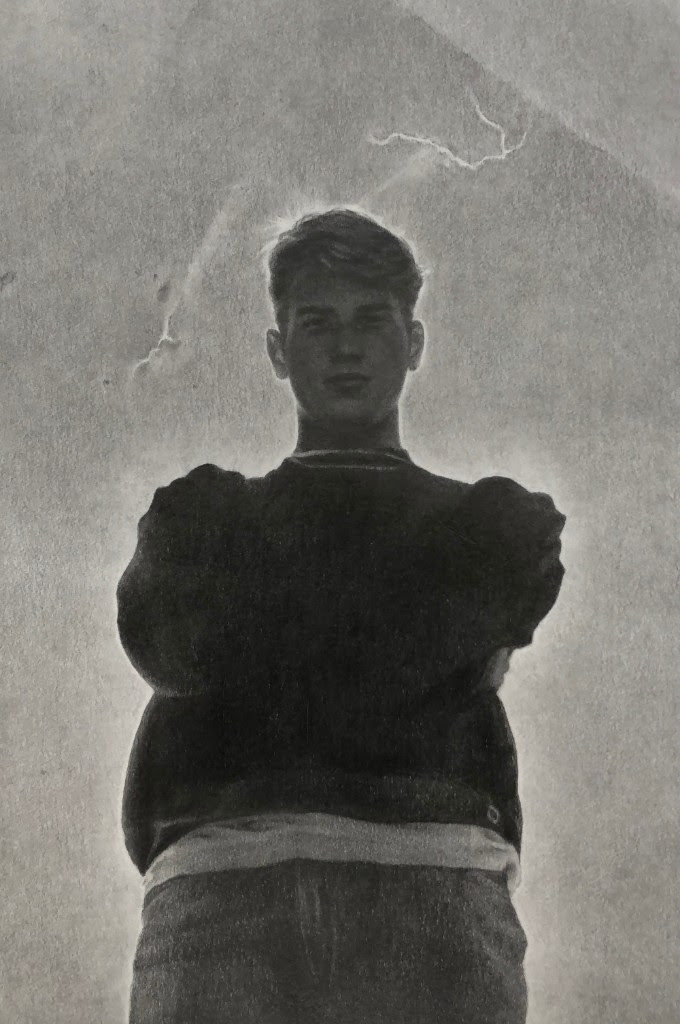
Glen Fogel, First Love as Drawn by Second Love (the sun inside him) (2018). Courtesy of the artist and JTT.
Glen Fogel dabbles in just about every artistic medium, most often combining elements of his own personal history with the trappings of mass-marketing tactics and consumerism. In the 2011 video that his exhibition draws from, Fogel uses his own family member’s engagement and wedding rings as a focal point.
191 Chrystie Street; September 8–October 21, 2018, opening reception 6 p.m.–8 p.m.
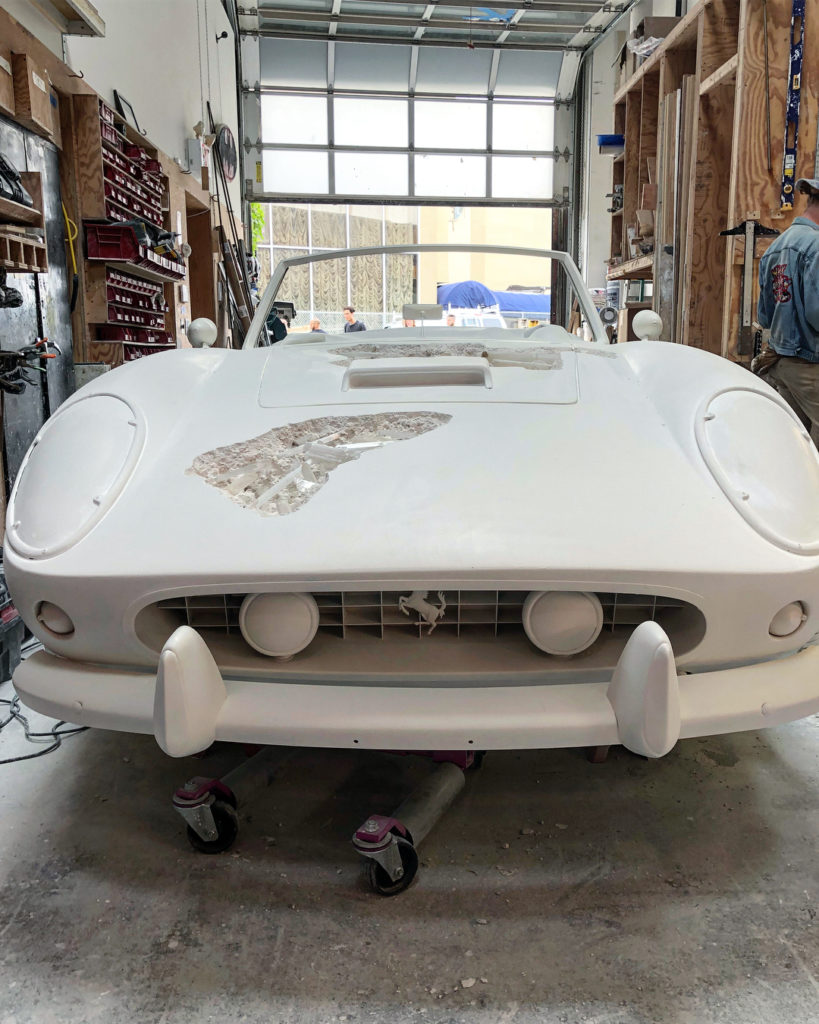
Daniel Arsham’s “1961 Ferrari 250GT California” screenshot via Instagram.
Daniel Arsham’s work imagines a dystopian future full of the crumbling stone ruins of everyday objects. He’s turned the ground floor of Perrotin into a garage housing two life-size car sculptures inspired by classic 1980s cinema: the 1981 Delorean in Back to the Future (1985) and the 1961 Ferrari from Ferris Bueller’s Day Off (1986), their long-defunct engines choked with volcanic ash and crystals.
130 Orchard Street; September 8–October 21, 2018, opening reception 5 p.m.–8 p.m.

Samuel Jablon, Death Is Elsewhere (2018). Courtesy of the artist and Freight + Volume.
Though Samuel Jablon is usually known for creating works made of tiles, mirrors, and glass, the new body of work includes only paintings. Each canvas acts as a discrete object, bearing fractured words that comprise a sort of poem.
97 Allen Street; September 8–October 14, 2018, opening reception 7 p.m.–9:30 p.m.
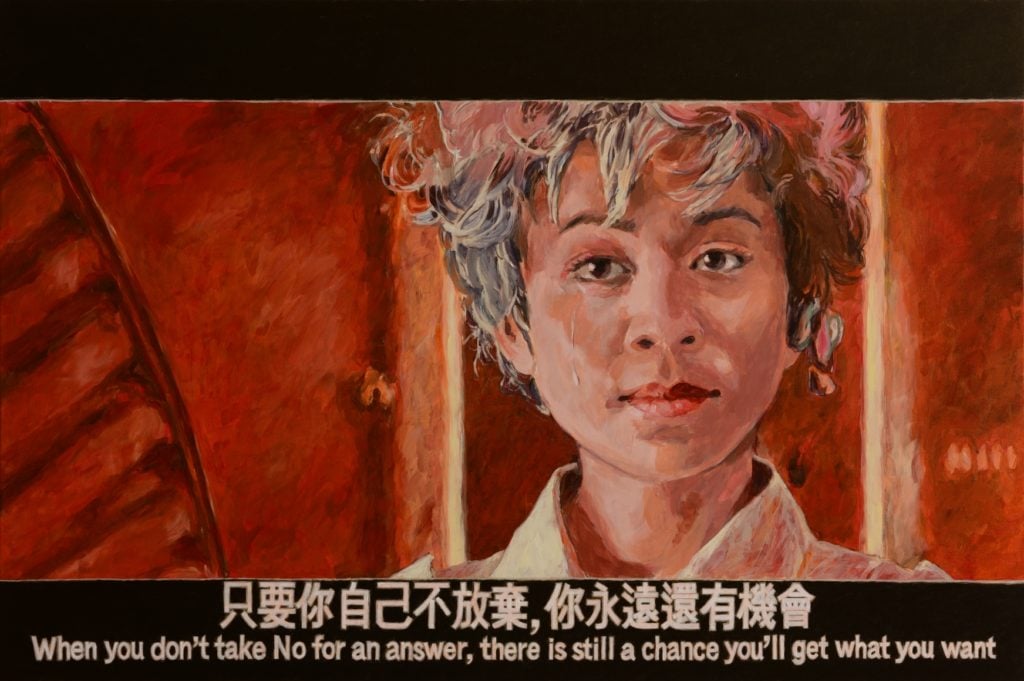
Chow Chun Fai, 2046: There is still a chance you will get what you want (2018). Courtesy of Eli Klein Gallery and Chow Chun Fai.
Eli Klein presents 19 paintings from Chow Chun Fai’s “Painting on Movies” series, which depicts film stills from international movies, with Chinese subtitles and English translations from the scene. A Hong Kong native, Fai’s work taps into the question of identity for Hong Kong natives, especially following the former British colony’s return to China in 1997.
398 West Street; September 8–October 14, 2018, opening reception 5 p.m.–8 p.m.
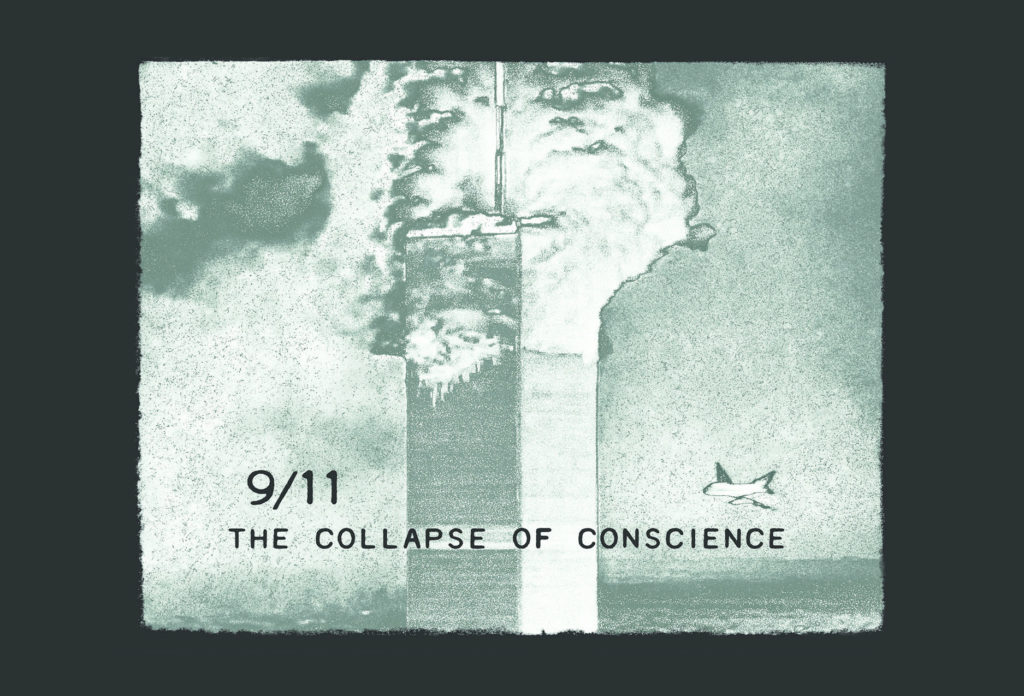
Fredric Riskin, The Collapse of Conscience Panel 8, detail. Courtesy of Ronald Feldman Gallery.
Fredric Riskin’s last show at Ronald Feldman Gallery was in 1987. Over 30 years later, he returns with a large-scale installation—with audio, video, prints, and works on canvas—that acknowledges that the ways in which our country is still healing from the devastating wounds inflicted by the 9/11 attacks.
31 Mercer Street; September 11–October 13, 2018, opening reception 6 p.m.–8 p.m.
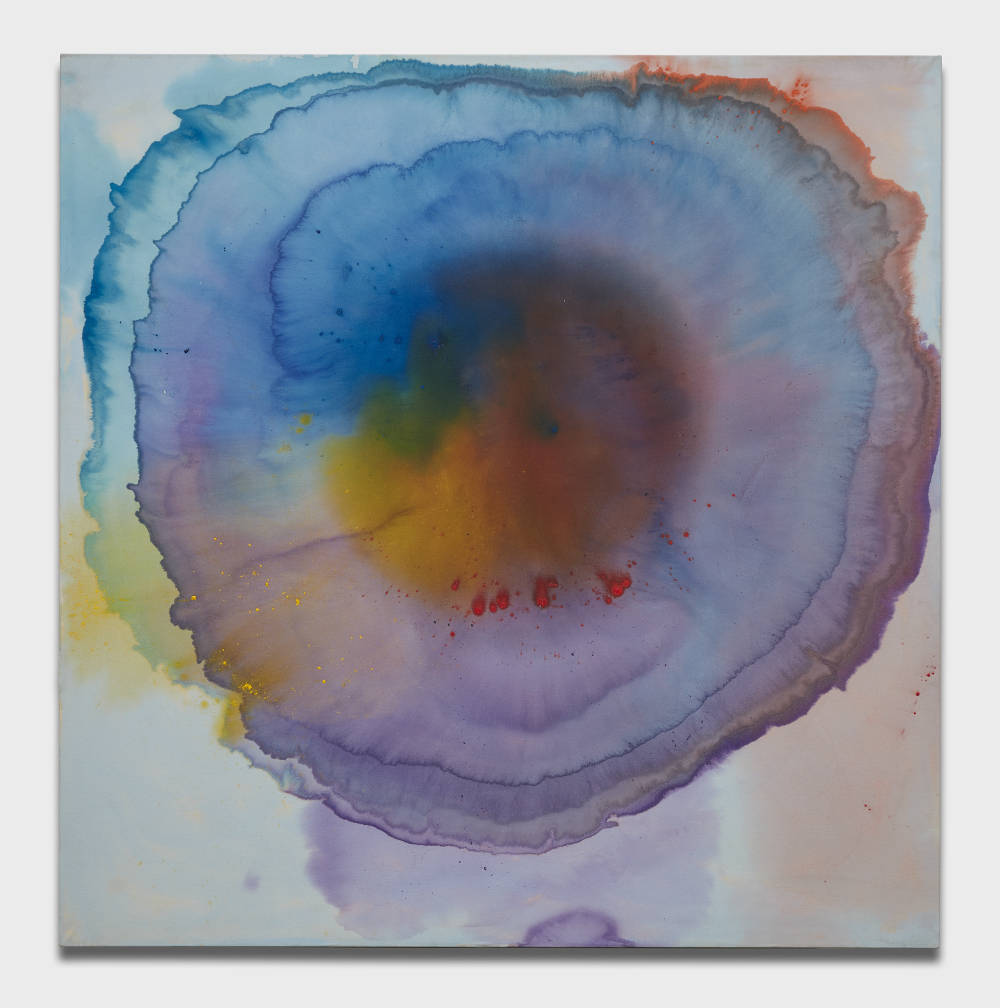
Vivian Springford, Untitled (1973). Photo: Matt Kroening. Courtesy of Almine Rech Gallery
Criminally overlooked Abstract Expressionist Vivian Springford is rediscovered at New York’s Almine Rech Gallery, which offers a monographic catalog to go along with a wide selection of works featuring her unique style of stain painting. Moving to New York to attend the Art Students League in 1930, Springford became influenced by Chinese painting and Eastern philosophy, showing at galleries in the city before going blind after being diagnosed with macular degeneration in the 1980s and falling into obscurity. A social worker helped introduce her to gallerist Gary Snyder in the late 1990s, but it’s been some 15 years since her last show.
39 East 78th Street, 2nd Floor; September 12–October 20, 2018, opening reception 6 p.m.–8 p.m.
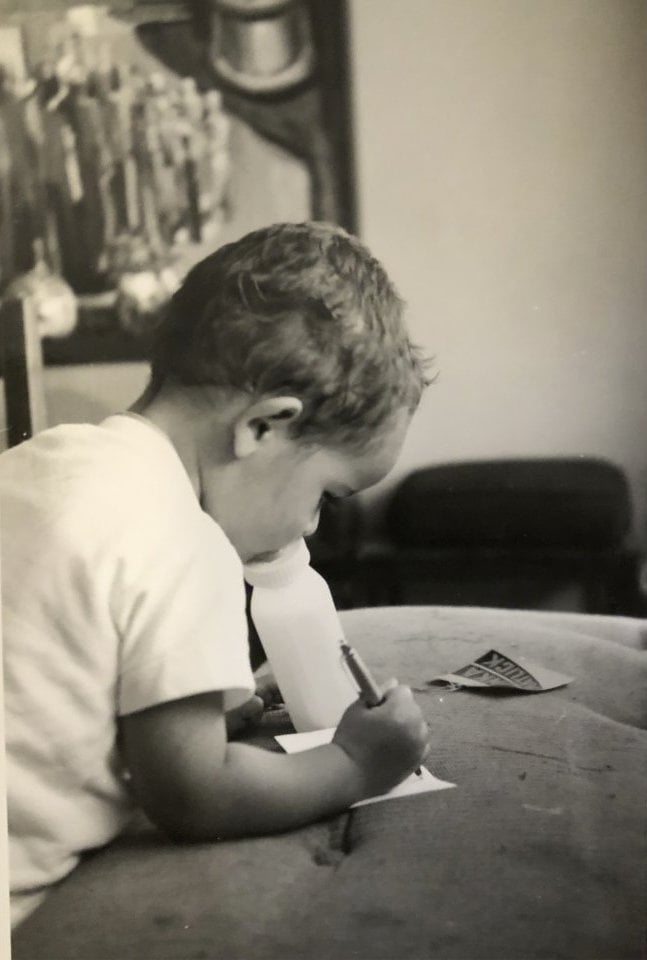
Gabriel Orozco. Courtesy of Marian Goodman.
When Gabriel Orozco moved to Bali two years ago, he began carving stone sculptures at a local stonemason’s yard, often working with soft limestone. In his first exhibition at Marian Goodman since moving to Asia, he’ll present some of this new work as well as recent paintings.
24 West 57th Street; September 12–October 27, 2018, opening reception 6 p.m.–8 p.m.
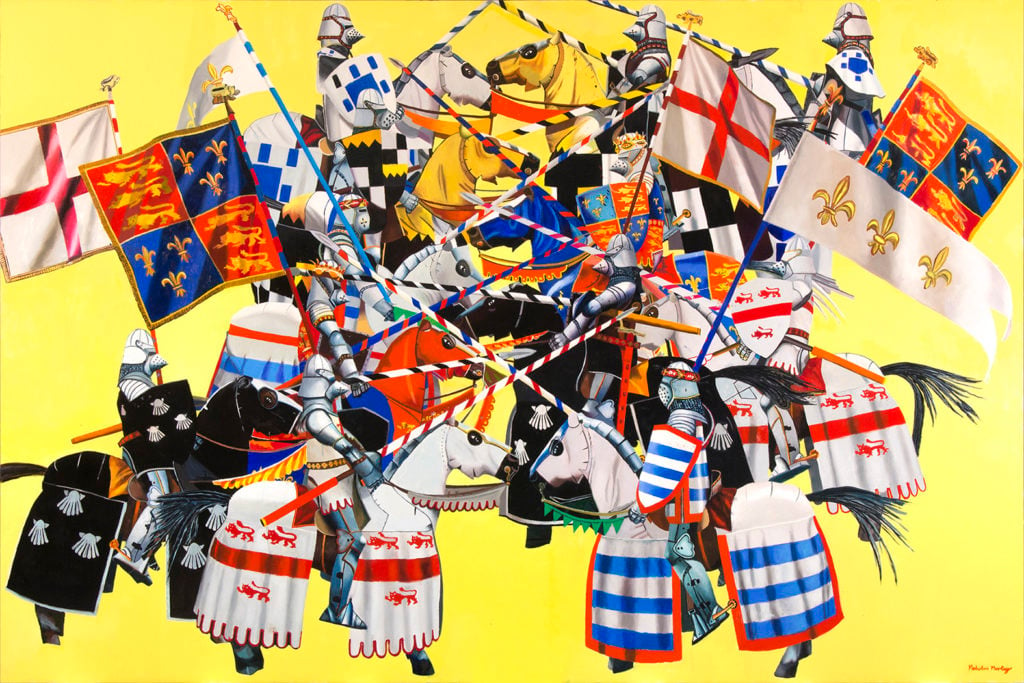
Malcolm Morley, Melee at Agincourt (2017). Courtesy of the estate of Malcolm Morley and Sperone Westwater, New York.
Malcolm Morley died in June at the age of 86, painting right up until the end. His recent works featuring colorful knights, including the 10-foot-wide Melee at Agincourt, are joined by his forays into photo-based realism from the 1960s and neo-expressionism in the 1980s.
257 Bowery; September 12–October 27, 2018, opening reception 5 p.m.–7 p.m.

Sam Falls, Untitled (Ouachita National Forest, 1), 2018. Courtesy of 303 Gallery.
Sam Falls continues to harness the power of nature, bringing his art supplies to national parks and arranging found leaves, branches and flowers on his canvases with dry pigment. The paint is then activated by the elements, bleeding into the fabric from the mist and the rain, and drying in the sun.
555 West 21 Street; September 12–October 20, 2018, opening reception 6 p.m.–8 p.m.

Detail of Hieronymus Bosch, The Garden of Earthly Delights (ca. 1515).
David Zwirner is taking a bold stance for the first exhibition of the fall season, with a selection of Old Master works shown in conjunction with contemporary works that riff on ideas of the fantastic and the sublime, as well as more realistic expressions of nature and religion. The show culls works ranging from the 14th century through today, in collaboration with Old Master specialist Nicholas Hall.
537 West 20 Street; September 12–October 27, 2018; opening reception 6 p.m.–8 p.m.

Ellen Berkenblit, Untitled (2016). Courtesy of Anton Kern Gallery.
In a salon-style hanging at Anton Kern Gallery, 40 years worth of paintings and drawings by the New York artist Ellen Berkenblit show the full range of her distinct style. One entire wall in the gallery is consumed by Sunshine, a massive 16-foot work showing a leopard on a city street, a surreal juxtaposition that recurs throughout her work.
16 East 55th Street; September 12–October 20, 2018, opening reception 6 p.m.–8 p.m.
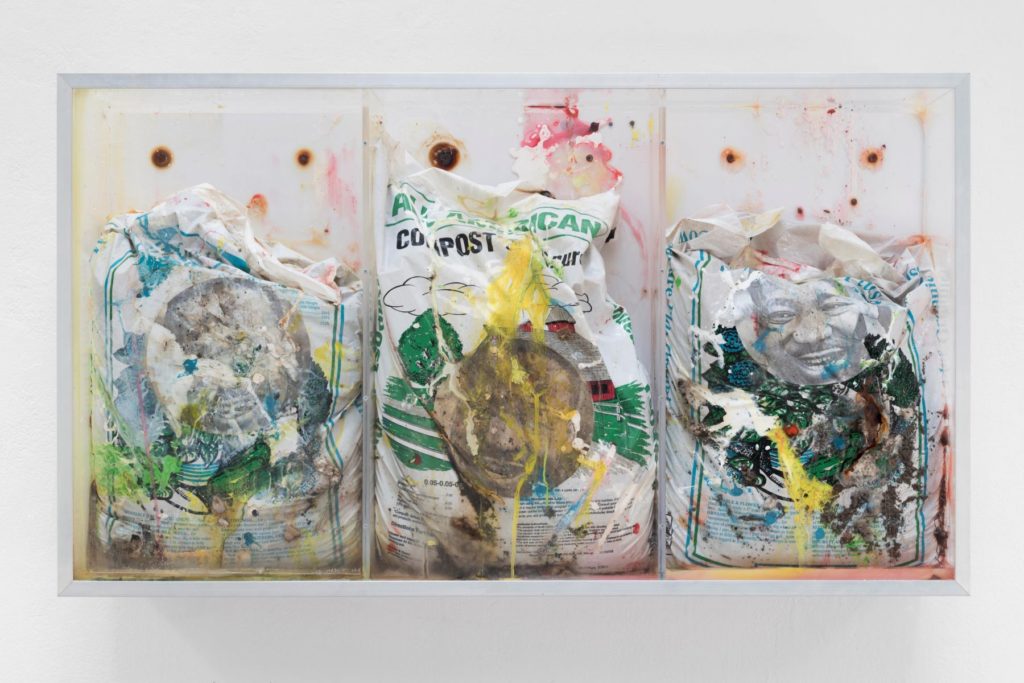
Pope.L, Rebuilding the Monument (chicago version/the vitrine problem/three of them) (2007). Courtesy of the artist and Mitchell-Innes & Nash.
In this follow up to his similarly named solo show at La Panacee museum in Montpellier, Pope.L presents works—including a selection of “Re-Photo” collages, his Syllogism video project, and wall-mounted assemblage sculptures in acrylic boxes—that he describes as “a disgustingly neat pile of doubt, experiment, and denial shoved up hot against claim, leap, gambit, and caesura.”
534 West 26 Street; September 13–October 27, 2018, opening reception 6 p.m.–8 p.m.
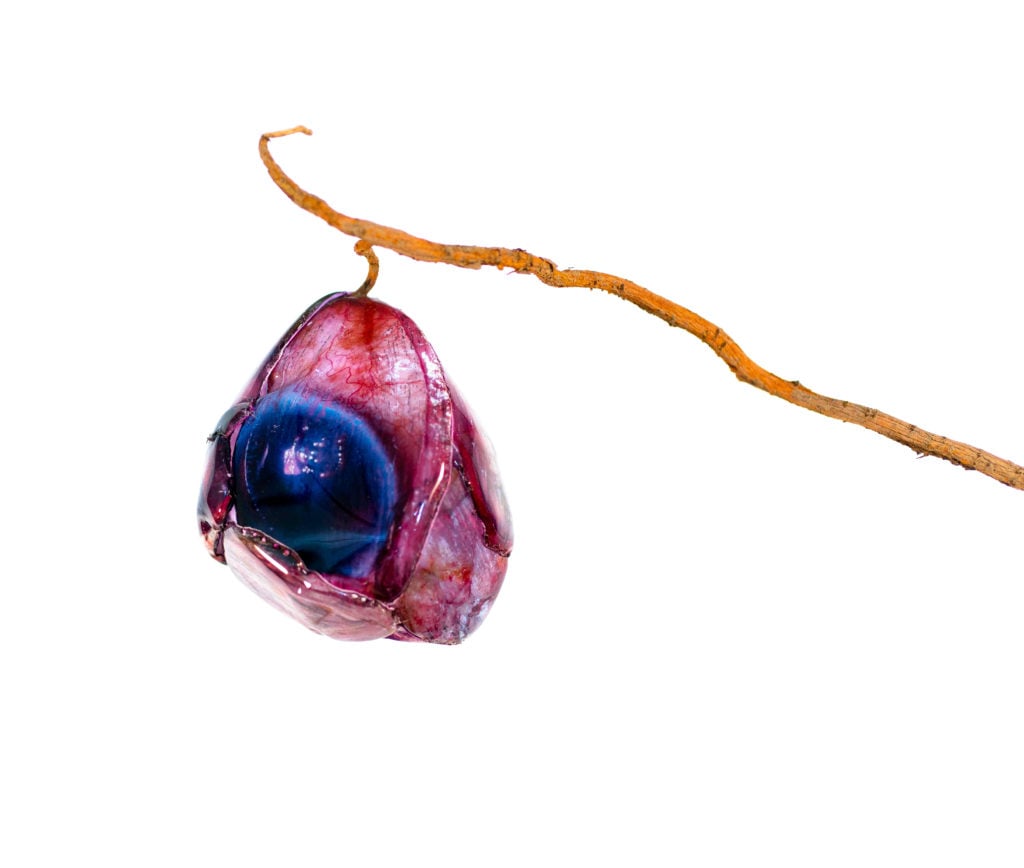
Jesse Krimes, Of Beauty and Decay; or, not (brown 1), 2018. Courtesy of the artist and Burning in Water.
Burning in Water will debut its new gallery space with the work of Jesse Krimes, who created a massive 39-piece mural, one section at a time from scavenged art supplies while serving a six-year prison sentence. His new work, created since his release, are sculptures and installations created based on the results of Google image search queries and attempting to map the algorithmic networks behind the search engine.
507 West 27th Street; September 13–November 3, 2018, opening reception 6 p.m.–8 p.m.

Drea Cofield, Peek-A-Boo (2018). Courtesy of Nancy Margolis Gallery.
In Drea Cofield’s super-saturated tableaux, purple people climb orange trees overlooking a fuschia-stream, balancing atop each others’ shoulders to pluck shiny bulbs from a tree. This is the world inside Cofield’s new series “Lotus Eaters,” its name taken from the fictional Eden conjured in Homer’s Odyssey, but with a contemporary spin.
523 West 25th Street; September 13–October 27, 2018, opening reception 6 p.m.–8 p.m.
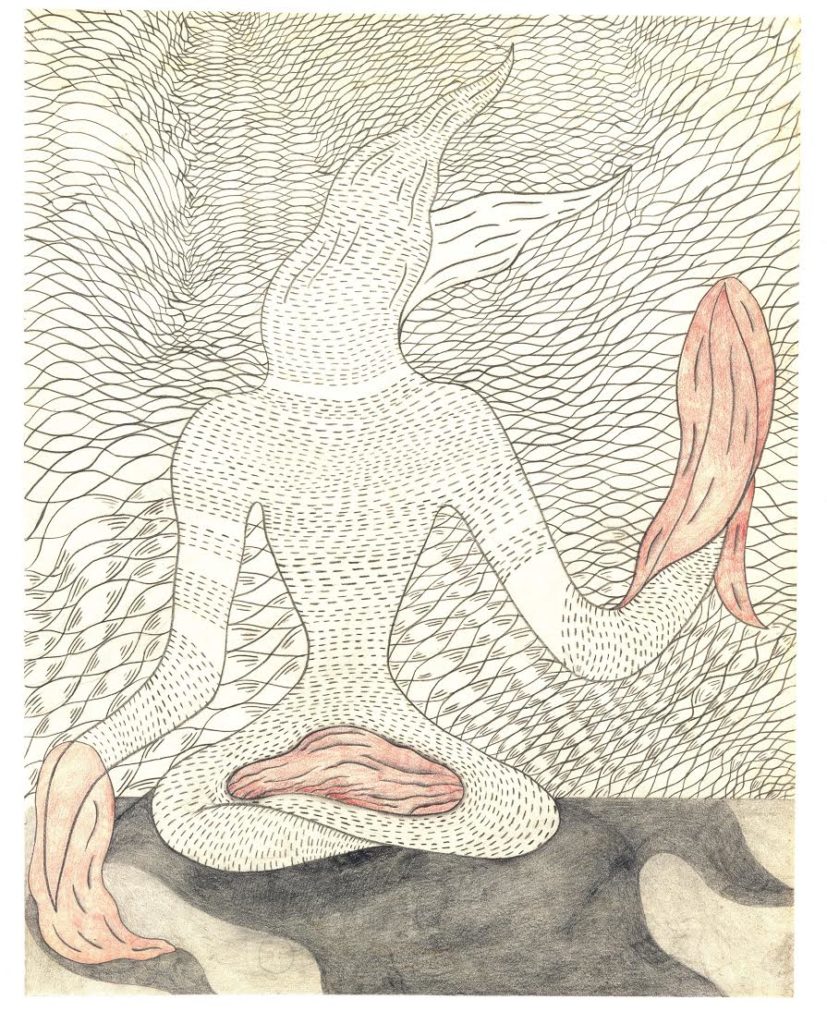
Matthew Marks, Hidden Danger Lady (1984–2012). Courtesy of Matthew Marks Gallery.
Suellen Rocca was a founding member of the artist group the Hairy Who, an offshoot of the Chicago Imagists. The group’s first museum show opens at the Art Institute of Chicago on September 26. At Matthew Marks, Rocca gets an exhibition dedicated exclusively to her drawings, which often feature surrealistic interpretations of the female form that defy conventions of the male gaze.
526 West 22nd Street; September 13–October 27, 2018, opening reception 6 p.m.–8 p.m.
![Juliana Cerqueira Leite, “We don’t know what is happening because there is no leader...and it was very dangerous...they need a lot more help...he tried to hold his bow and then they shot him...and beat us...there is the possibility that someone will say you asked for it.” [Grey one], 2017. Photo courtesy of Arsenal Contemporary and the artist.](https://news.artnet.com/app/news-upload/2018/08/unnamed-8-684x1024.jpg)
Juliana Cerqueira Leite, “We don’t know what is happening because there is no leader…and it was very dangerous…they need a lot more help…he tried to hold his bow and then they shot him…and beat us…there is the possibility that someone will say you asked for it.” [Grey one], 2017. Photo courtesy of Arsenal Contemporary and the artist.
214 Bowery; September 13–November 2, 2018, opening reception 6 p.m.–8 p.m.
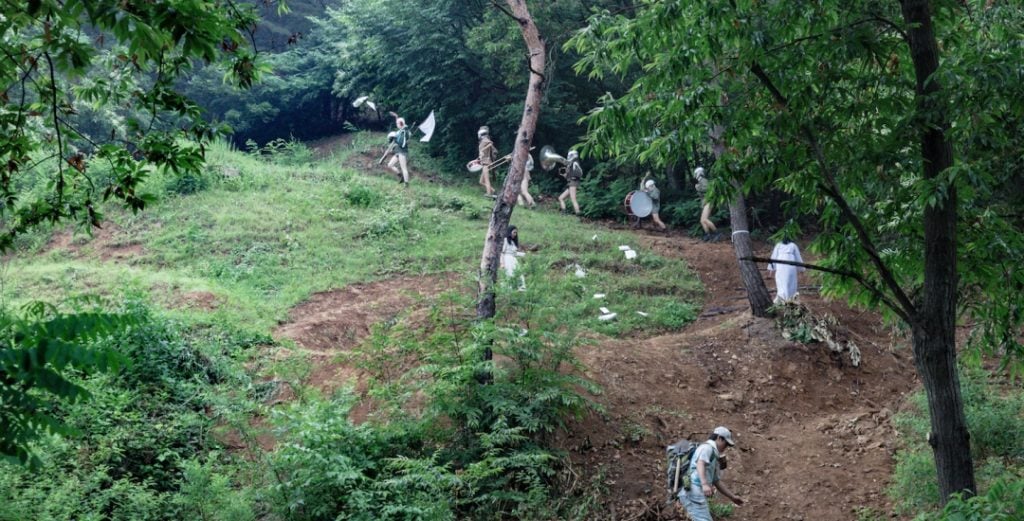
Park Chan-Kyong, Citizen’s Forest (2016). Film still courtesy of Tina Kim Gallery.
In his three-channel video installation Citizen’s Forest (2016), South Korean artist Park Chan-Kyong presents an allegorical take on his country’s modern history, from 1894’s Donghak Peasant Revolution to the Seol Ferry Disaster of 2014. The work is joined by his “Child Soldier” series of photographs and film stills of North Korean soldiers engaged in everyday activities, and a newly commissioned narrative film, BELIEVE IT OR NOT, about North Korean defectors who may be spies or double agents.
545 West 25th Street; September 13–October 13, 2018, opening reception 6 p.m.–8 p.m.
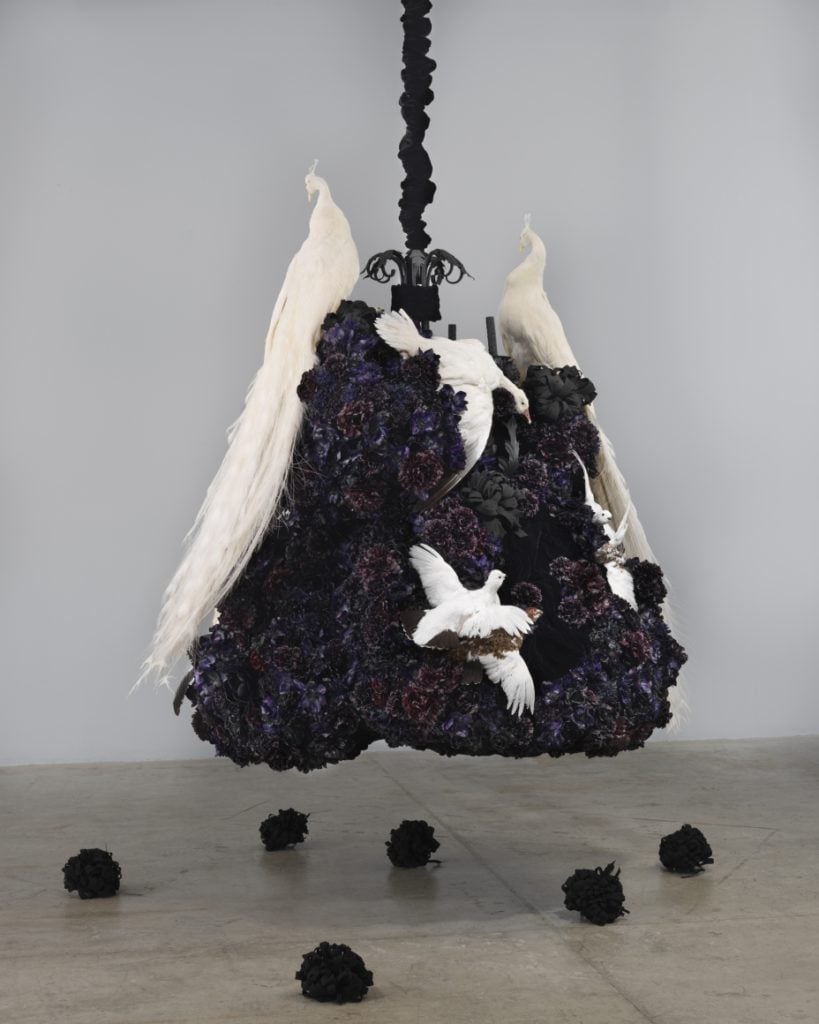
Petah Coyne, Untitled #1375 (No Reason Except Love: Portrait of a Marriage), 2011–12. Photo courtesy of Galerie Lelong.
For the first solo exhibition in 10 years, Petah Coyne presents new and recent work, including a massive sculptural sea of Venetian velvet, silk flowers, and cast statues wrapped in fabric. The gallery has set up a raised viewing platform offering an overhead view of the installation, titled Untitled #1379 (The Doctor’s Wife), 1997–2018.
528 West 26th Street, September 13–October 27, 2018, opening reception 6 p.m.–8 p.m.
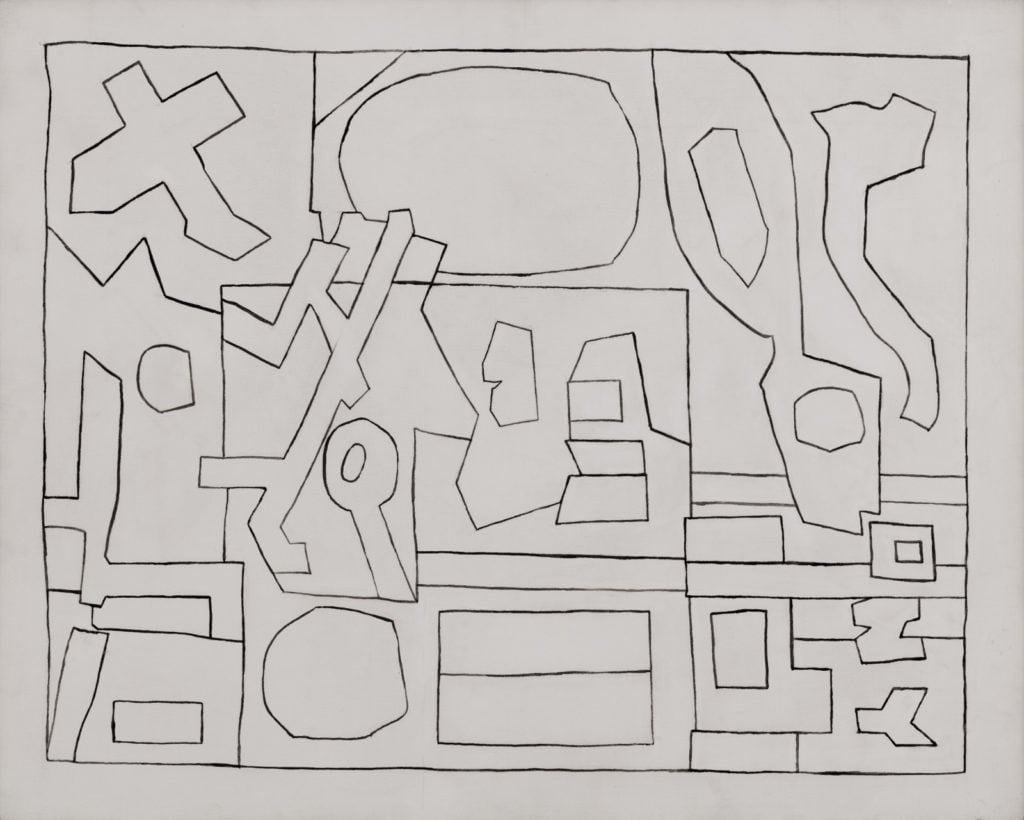
Stuart Davis, (Letter and His Ecol [Black and White Version]), 1962. Photo by Diego Flores, courtesy of Paul Kasmin Gallery. ©Estate of Stuart Davis/Licensed by VAGA, New York, NY.
293 Tenth Avenue; September 13–December 22, 2018, opening reception 6 p.m.–8 p.m.
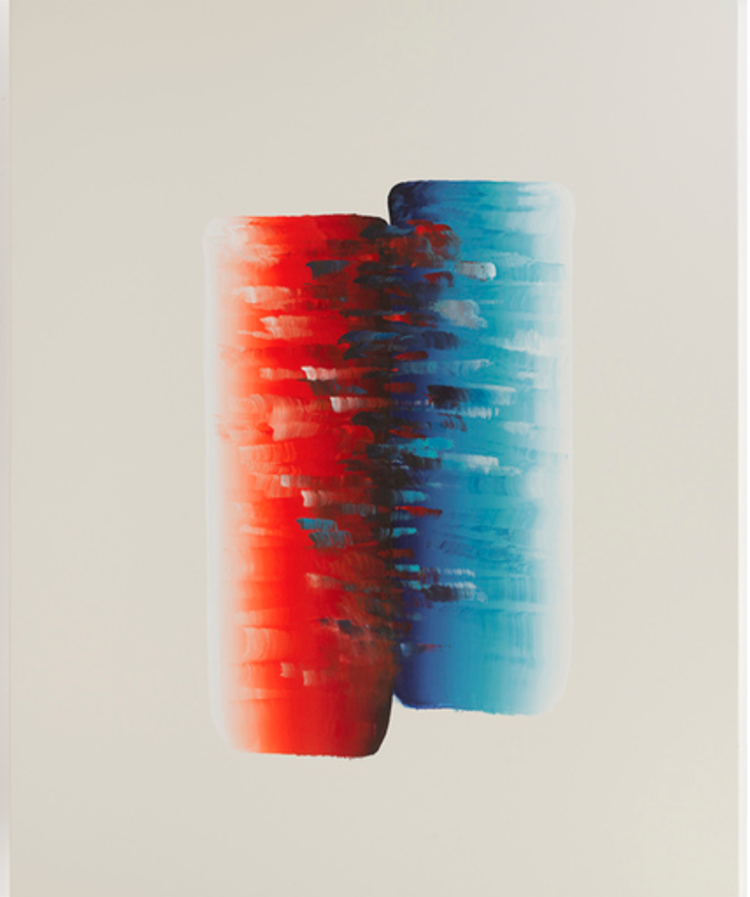
Lee Ufan, Dialogue (2017). Courtesy of Pace.
Lee Ufan expands upon his formerly monochromatic “Dialogue” series using brightly saturated hues and more gestural markings. Though the works look simple, Lee carefully matches his brushstrokes to his breathing, taking a full month to complete each painting. The exhibition also includes some of the artist’s largest pieces to date, including a 25-foot-long screen work.
510 West 25th Street; September 14–October 13, 2018, opening reception 6 p.m.–8 p.m.
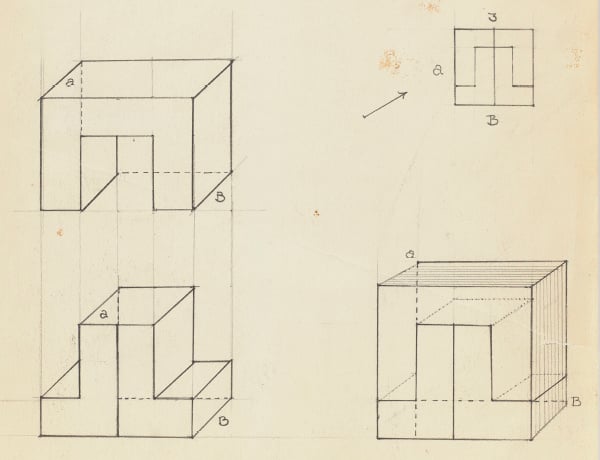
Carmen Herrera. Courtesy of Lisson Gallery.
In the late 1960s, Carmen Herrera began working in sculpture, after “it became clear to me that the linear elements in my work required a hard surface to integrate structurally the ‘hard edges.’” She hired a carpenter to help bring her designs to life, but when he died and she ran out of funds, Herrera returned to painting. Lisson Gallery presents a selection of works, including sketches and a rare wooden sculpture, from this unknown chapter in the Cuban centenarian’s prolific career, as well as new painted aluminum structures that revisit the concept.
504 West 24th Street; September 14–October 13, 2018, opening reception 6 p.m.–8 p.m.
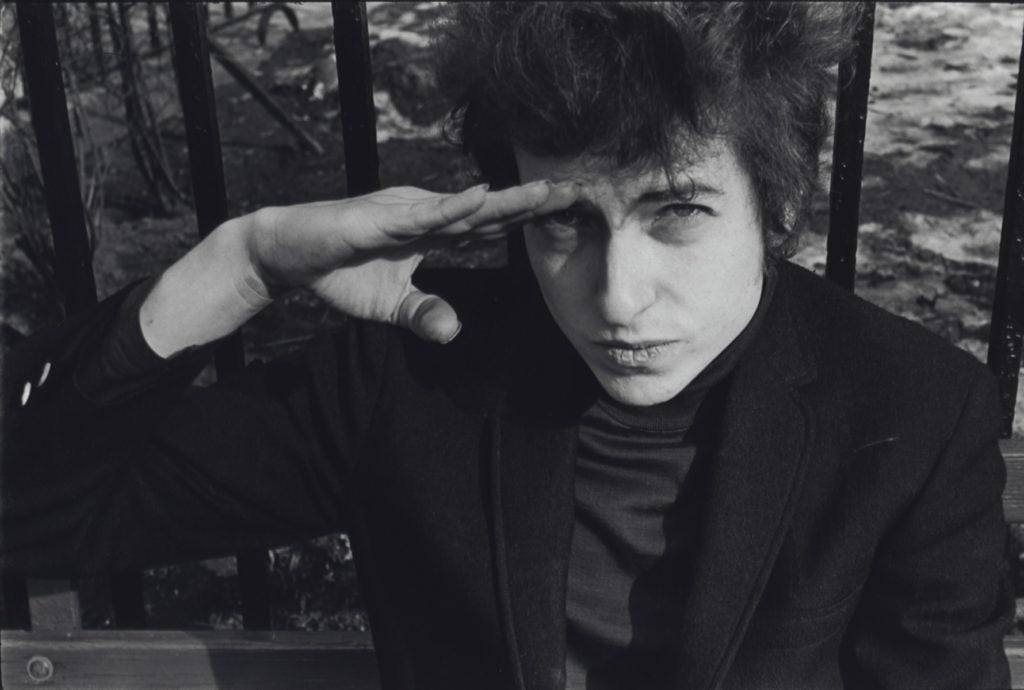
Fred W. McDarrah, Bob Dylan, sitting on a bench in Christopher Park (across the street from the offices of the Village Voice since 1960), either salutes or shields his eyes from the sun, January 22, 1965. Photo courtesy of Steven Kasher Gallery.
Fred W. McDarrah (1926–2007) was the first picture editor and a longtime staff photographer at New York’s Village Voice, capturing the city’s vibrant downtown arts and culture scene. Steven Kasher focuses on his black and white photographs from the late 1950s to the mid-1970s, with images of such icons as Allen Ginsberg and Bob Dylan.
515 West 26 Street; September 20–November 3, 2018, opening reception 6 p.m.–8 p.m.